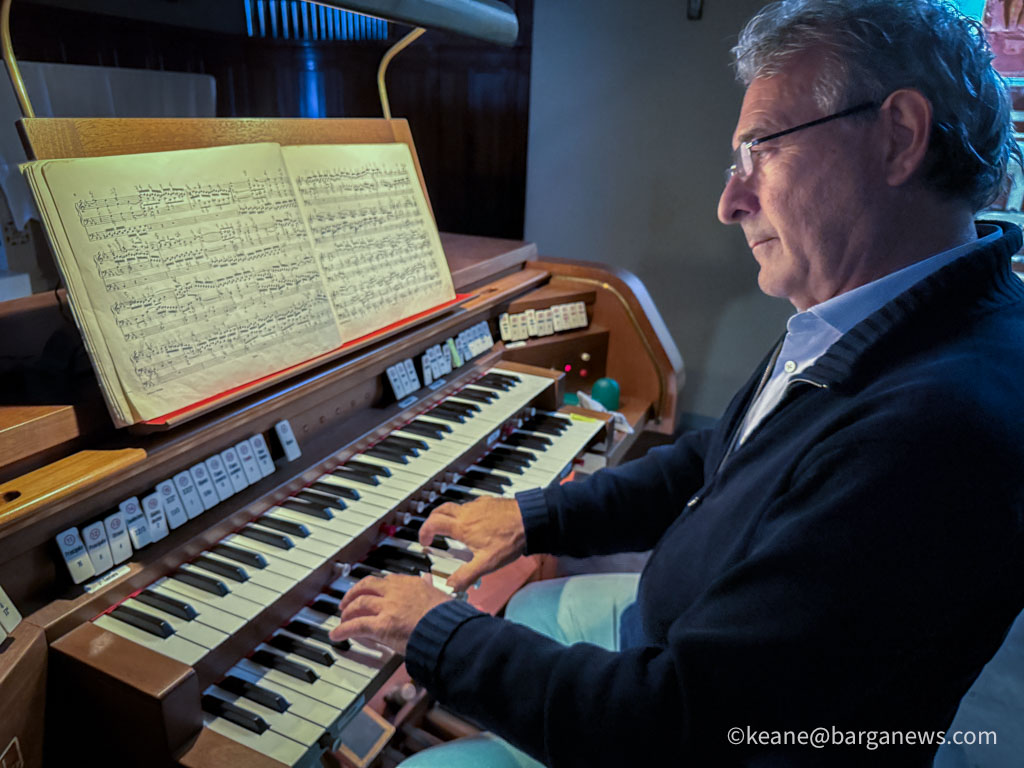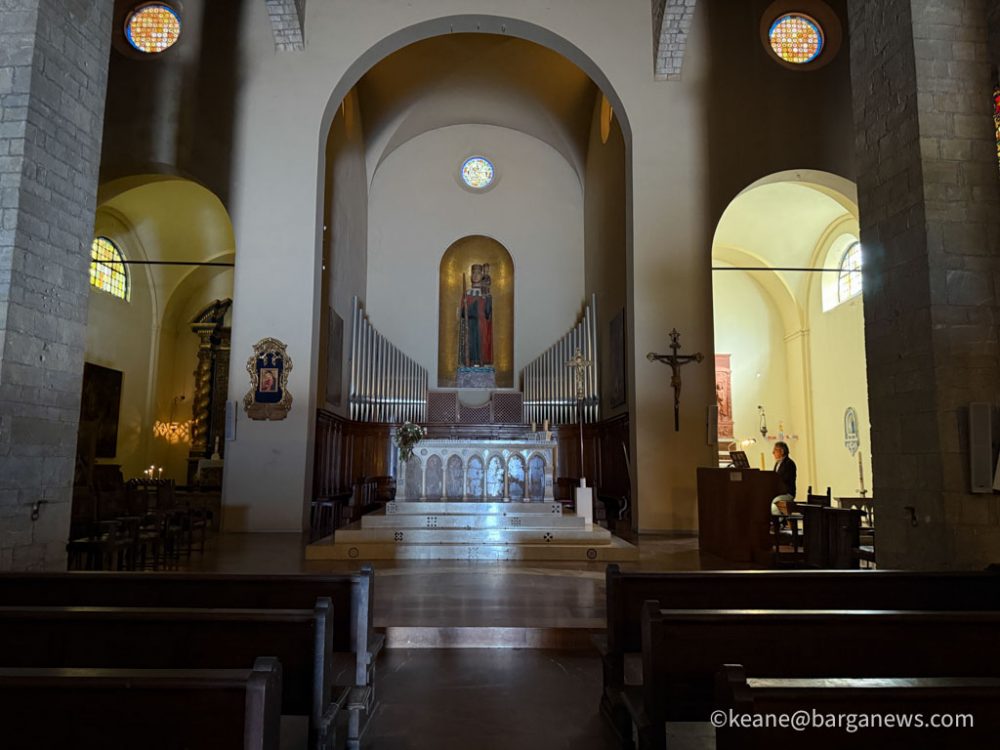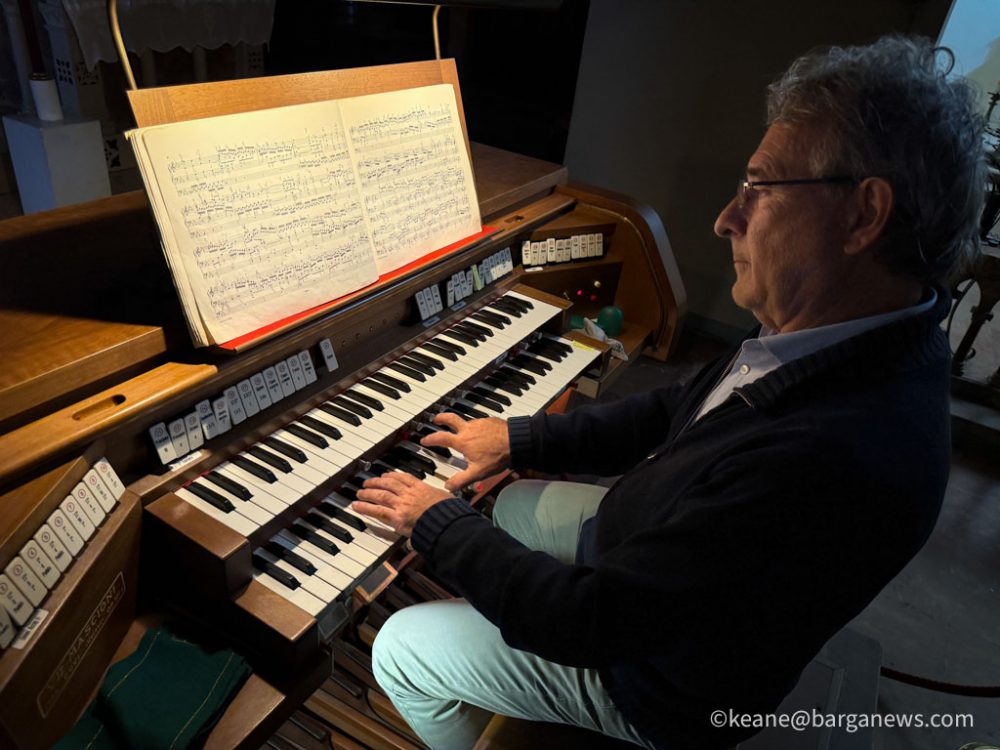Late in the afternoon, the Barga cathedral was filled with an unexpected presence. The stillness of the space was broken by the sound of the great organ, not in full thunder but in careful, measured phrases.
It was not a concert, nor a service. The cathedral was otherwise empty. At the console, seated with a score open before him, was Roberto Barsanti. He was practising alone, the centuries-old space becoming his private rehearsal hall.
The sound of the pipes, rising from behind the altar and filling the high arches, gave the impression that the cathedral itself had drawn breath.
The wooden statue of Saint Christopher, standing in its golden niche above the altar, seemed to listen. Barsanti’s playing was both study and devotion, a conversation with the instrument and with the building itself. His hands moved across the manuals while his feet worked the pedals, drawing deep resonant tones that leapt outward into the stone, lingering in the silence before fading.
It was a reminder that the Duomo is not only an architectural monument, nor simply a religious centre, but also a living vessel of sound.
On this quiet day, the organ’s voice, carried by Barsanti’s touch, turned an empty cathedral into a place alive with music.
Il suono dell’organo nel Duomo di Barga Nel tardo pomeriggio, il grande Duomo di Barga si è riempito di una presenza inaspettata.
Il silenzio dello spazio è stato interrotto dal suono del grande organo, non in pieno fragore ma in frasi misurate e attente.
Non era un concerto, né una funzione. La cattedrale era altrimenti vuota. Alla consolle, con lo spartito aperto davanti a sé, c’era Roberto Barsanti. Si stava esercitando da solo, trasformando lo spazio secolare nella sua sala prove privata. Il suono delle canne, che si innalzava da dietro l’altare e riempiva le alte arcate, dava l’impressione che la cattedrale stessa avesse preso respiro.
La statua lignea di San Cristoforo, collocata nella sua nicchia dorata sopra l’altare, sembrava ascoltare. L’esecuzione di Barsanti era insieme studio e devozione, un dialogo con lo strumento e con l’edificio stesso. Le sue mani scorrevano sulle tastiere mentre i piedi muovevano i pedali, facendo vibrare toni profondi e risonanti che si diffondevano nella pietra, indugiando nel silenzio prima di svanire.
È stato un promemoria che il Duomo non è soltanto un monumento architettonico, né semplicemente un centro religioso, ma anche un vaso vivente di suoni.
In quel giorno silenzioso, la voce dell’organo, guidata dal tocco di Barsanti, ha trasformato una cattedrale vuota in un luogo colmo di musica.







